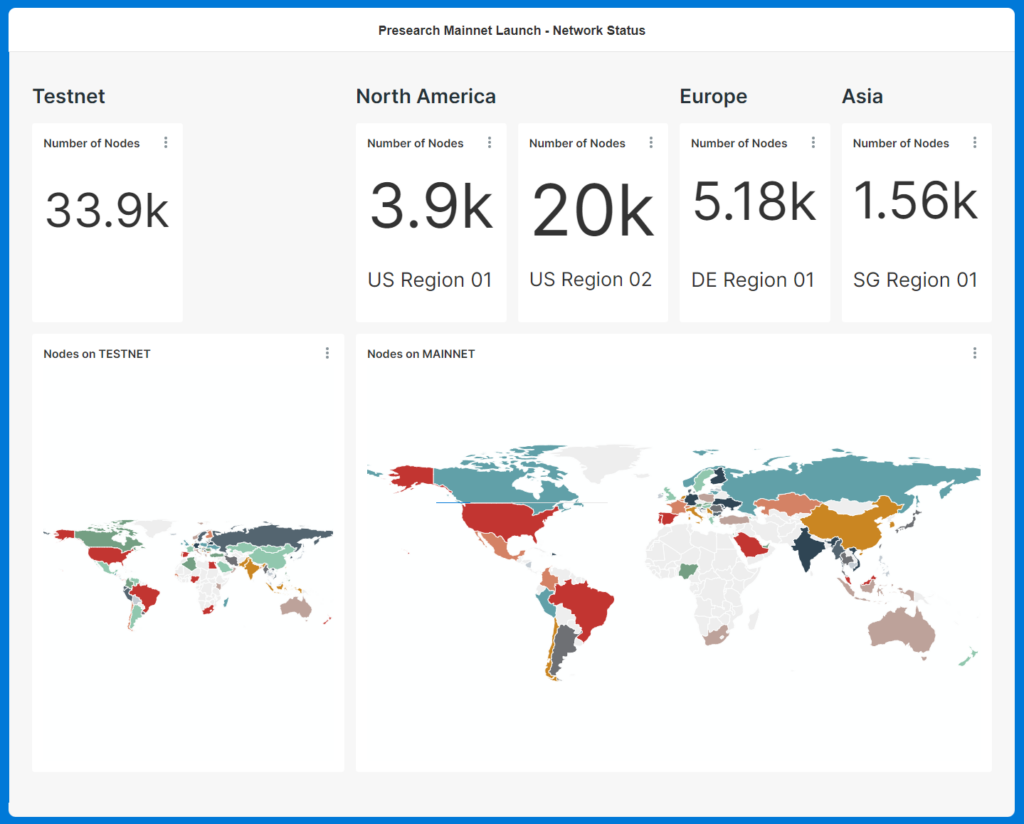Presearch – Welcome To Mainnet

Right now, a five year long effort begun by Colin Pape is transitioning from a carefully monitored, incrementally tweaked Testnet to its next phase. Presearch is being heralded as the world’s first decentralized contender in the Search Engine space. With almost 4 million registered users and over 150 million searches running through the system monthly, this is one of the most widespread Web3 projects running right now – a taste of things to come.
While that doesn’t hold much of a candle to current usage statistics for existing services the rest of the world has come to depend on day in and day out, it’s a good indicator that the user base for Web3 is growing rapidly despite the current market downturn and all that goes with it in the crypto frontier. The Web2 way of doing things involves massive datacenters, central processing, proprietary hardware, and secrecy – with over 70% of all searching globally being carried out through one provider – Google.

While only a quarter of all searches running through Google’s hardware originate in the US, three quarters of the hardware powering that system is based there. Presearch has aimed its sights on decentralizing things by incentivizing the creation and operation of search nodes around the world, with latency and availability factoring into the selection criteria when an end user submits a search query. Over time, the team will continue to launch gateways around the world, making it more and more likely that locally operated nodes will be utilized for returning those results.
How is Presearch Different?
The bullet point version is:
- Searches are always anonymized
- Your search is handled by multiple nodes and indexes on the network
- The results are obtained from a combination of other search providers, without passing on your details or receiving their ads
- What you get can be carefully customized, removing specific data providers or prioritizing others
This quick video does a fine job of walking through what happens under the hood:
The Migration Is Under Way
In 2017 a closed beta began to begin to lay the groundwork, inviting a select few to operate nodes and help prove the concept could work. In 2018 that expanded to an open beta, and in 2020 the operational Testnet was launched. In Testnet, the network was primarily centralized with only a small portion of its web traffic being handled by user-operated search nodes. As of this past 24 hours, this model is being left behind and the nodes will begin handling the full brunt of the querying being carried out.
As of this writing, the conversion of nodes from Testnet to Mainnet is around the halfway mark, but the process will be wrapped up over the coming hours:

Is This The Final Form?
Not by a long shot. This phase is the latest proof of concept, and while it comes with an array of benefits and improvements over the Testnet era, there is still a great deal of progress that will need to be made before Presearch is anywhere close to being a household name. They’ll need hundreds of thousands if not millions of node operators running their Proof of Stake software independently, and they’ll need an army of advertisers and marketers staking against Keywords – their version of AdWords. If that last part sounds intriguing, take a look at the documenation for how it’s managed. Currently there’s no Cost Per Click concept, competition requires a higher stake in order to draw the impressions and conversions from user searches, and that in turn helps the value of the backing token to all of this – PRE.
How Can I Get Involved?
Start Using The Search
The best way to get your feet wet is to dive right in – replace your search engine with Presearch’s Search Extension for Chrome-based Browsers, or in alternative browsers that allow it, manually add a search engine and direct the queries to “https://presearch.com/search?q=%s”. There are also mobile apps available for privacy-minded browsing.
Help Build Knowledge Panels

Google, Bing, Yahoo, and the rest serve what they call Knowledge Panels next to their search results – and the ever-increasing trend is for users to find what they need without ever needing to click through to any of the results that are returned. Many searches are made just to obtain a specific chunk of data about a business, place, or person and these panels have been more and more useful for serving that need. Presearch has open sourced this aspect of the engine and needs all the help it can get to compete in this space, with data that doesn’t end up lacking versus the big players. Take a look at the official repository for Presearch packages if you’ve got a particular focus where you think you can contribute.
Operate A Presearch Node
I’ll go into more detail on this topic in another article, but in the meantime check out the official documentation for Node Setup to see how easy it is to get up and running. In order to be rewarded for the effort (which honestly is only really designed to cover operation costs) you will need to stake 2000 PRE for each node running on the network, however you can get a node up and running and contributing without staking and without being rewarded for searches. You just need an online computer with a unique IP address, and a little spare time and bandwidth to get going. Use it as an excuse to get a little bit more familiar with what’s going on in Web3. It really is a fascinating world out there!
